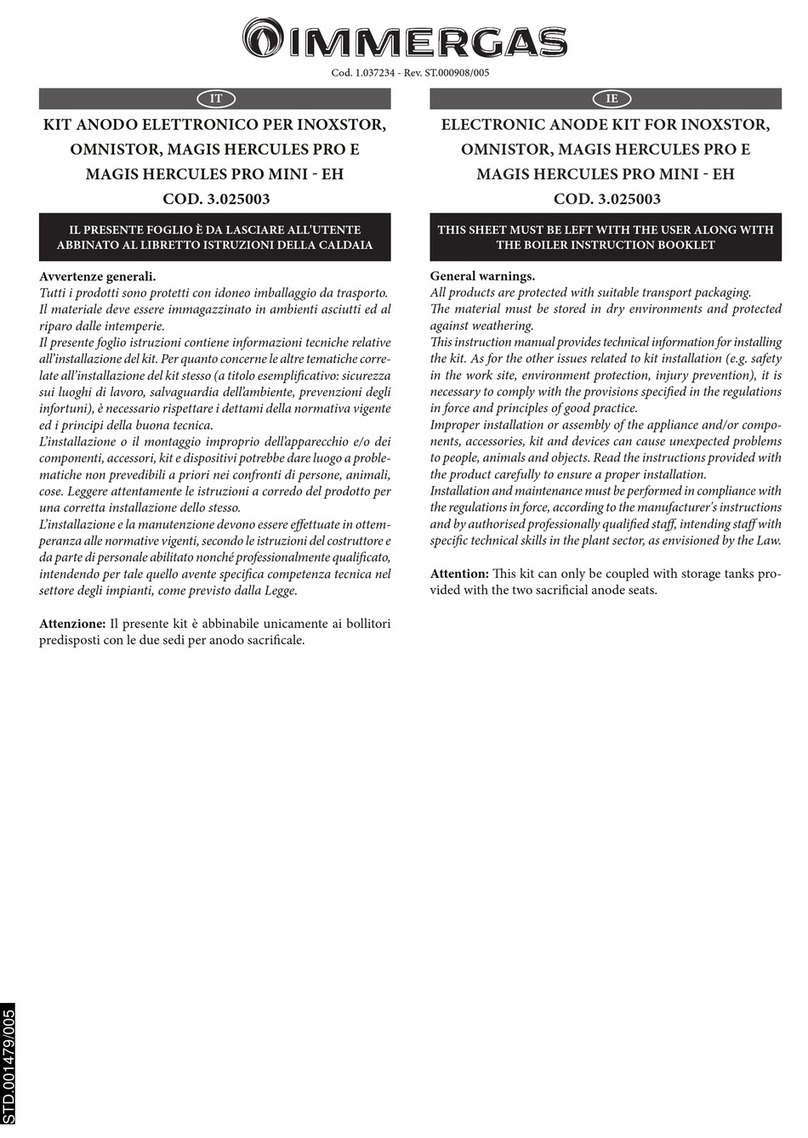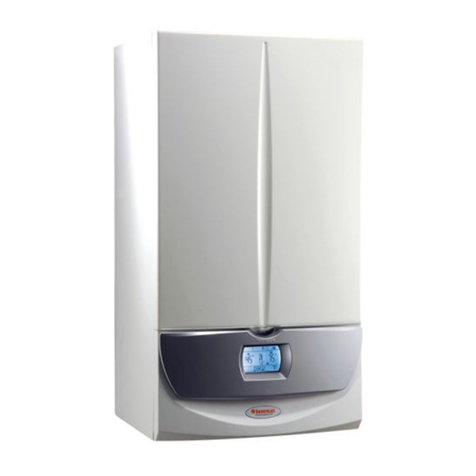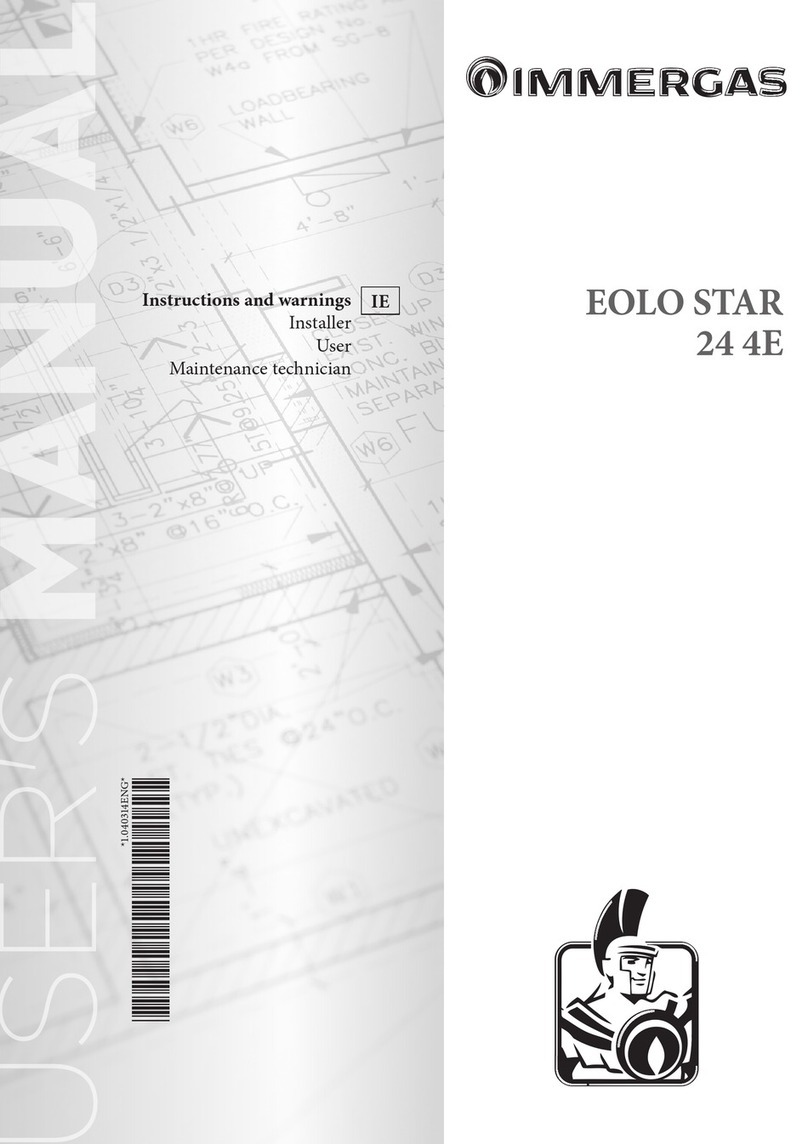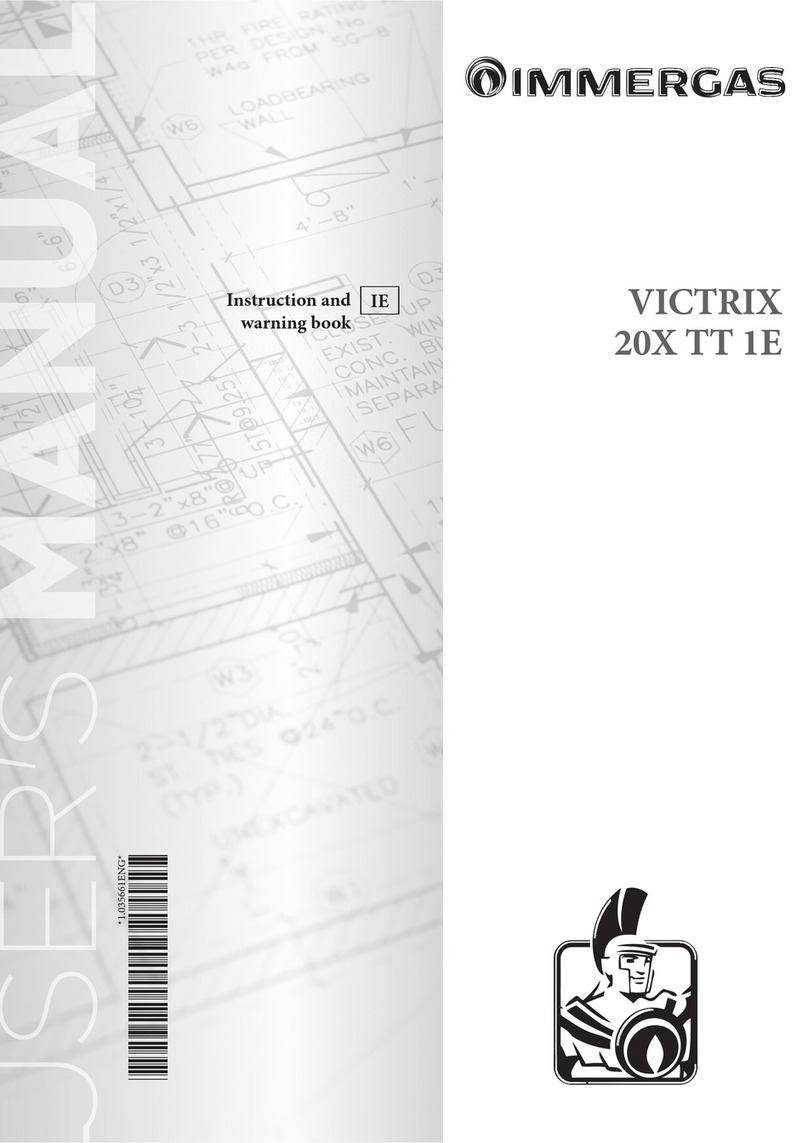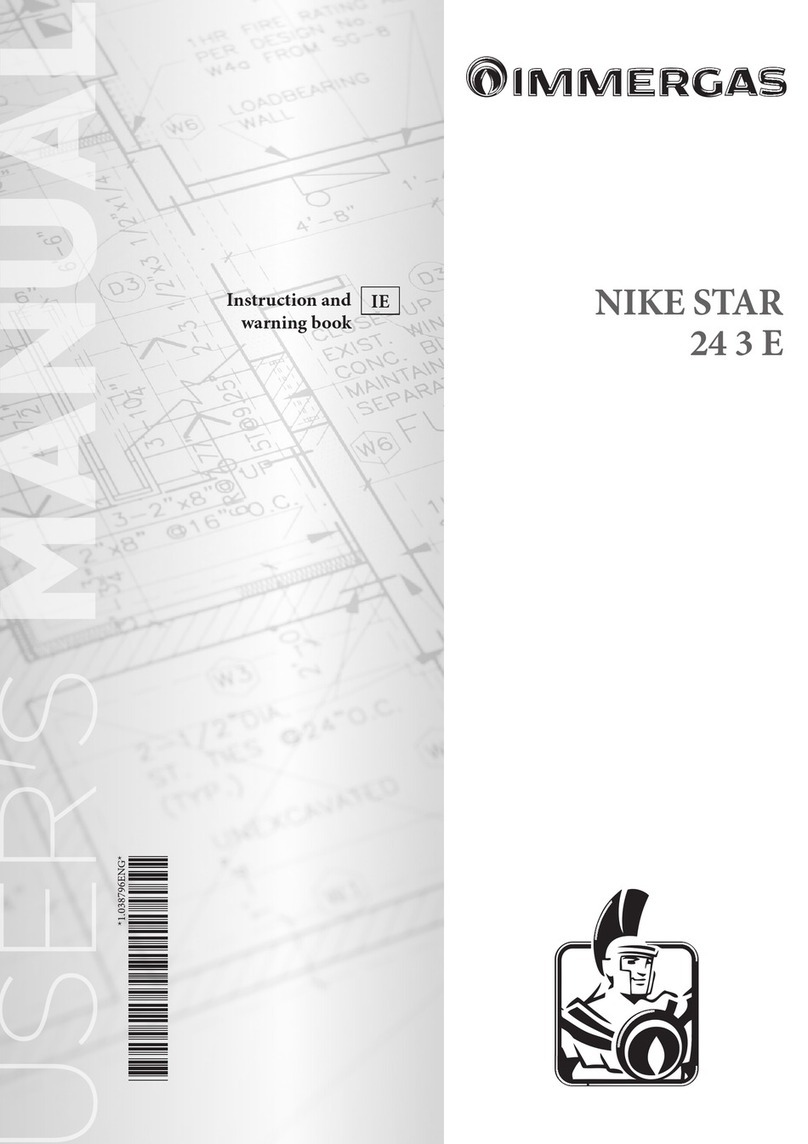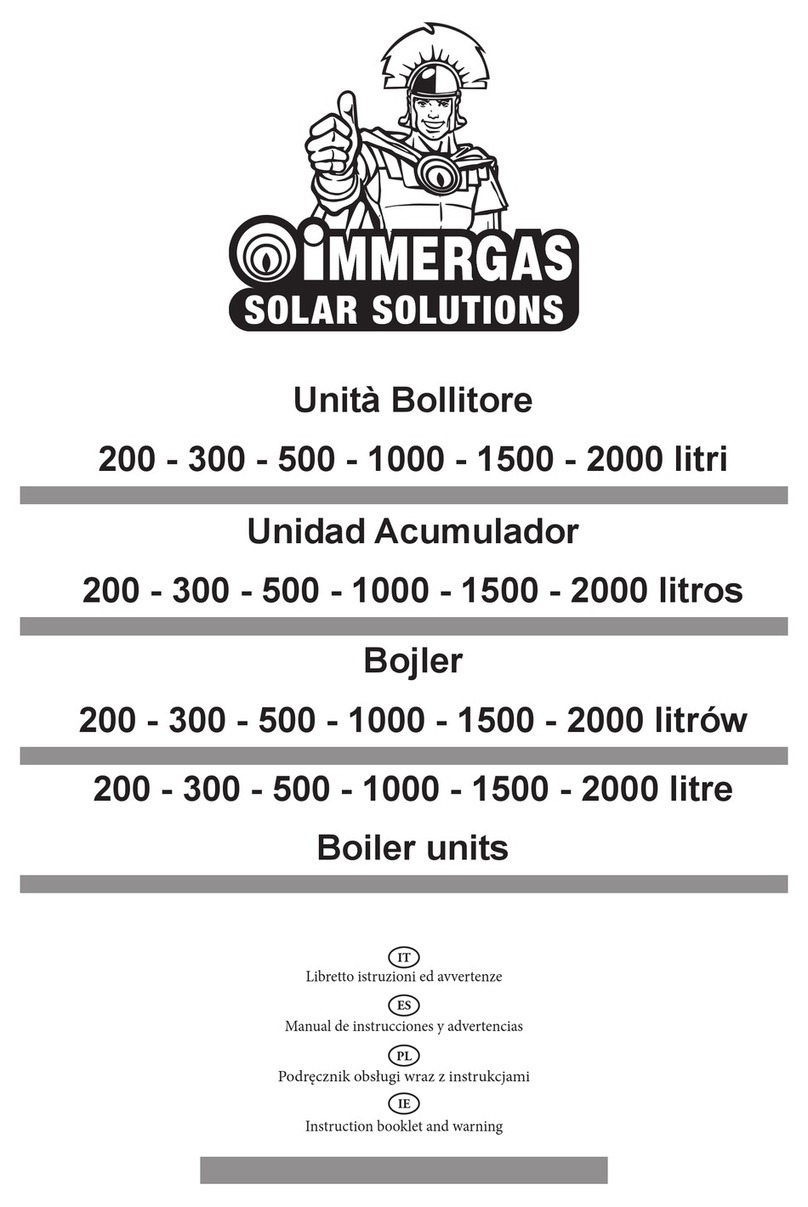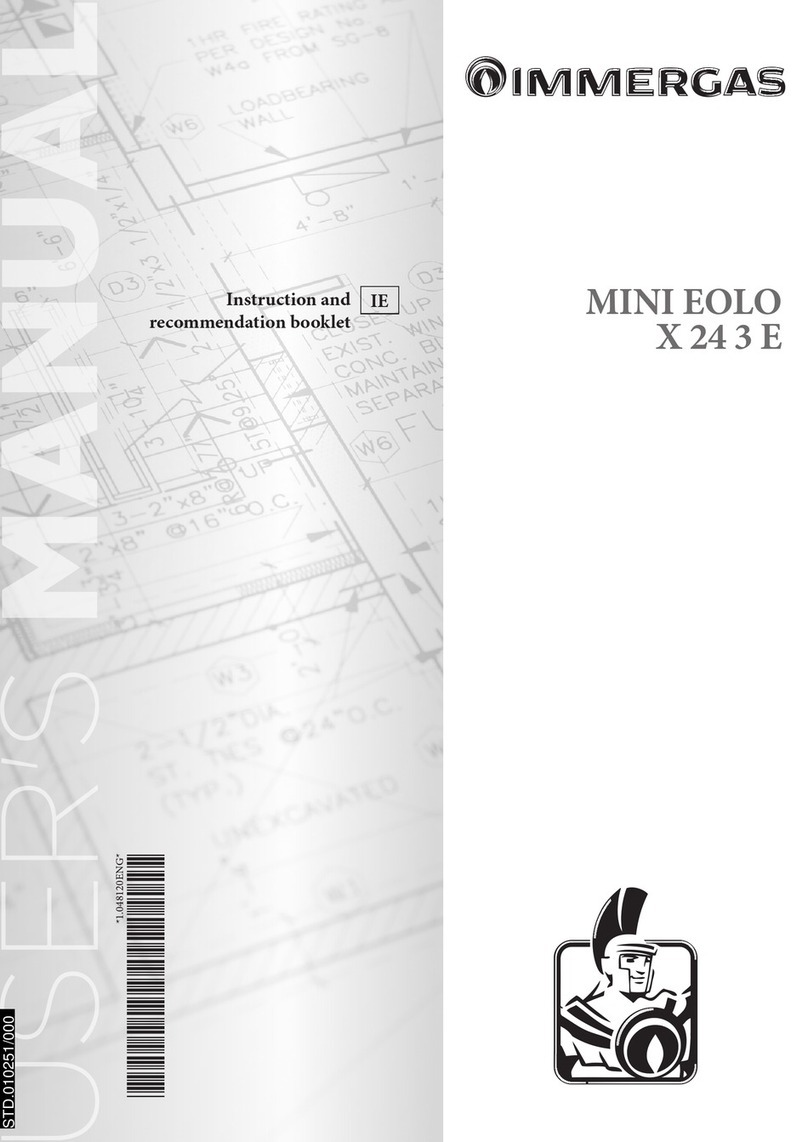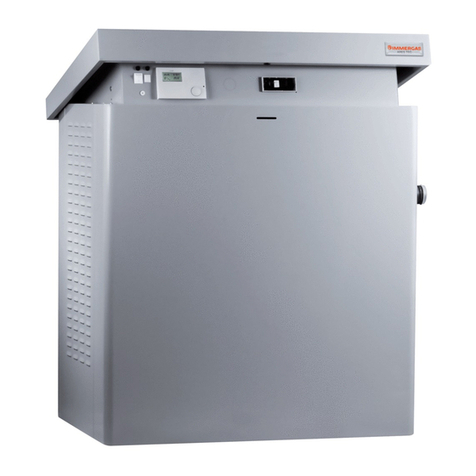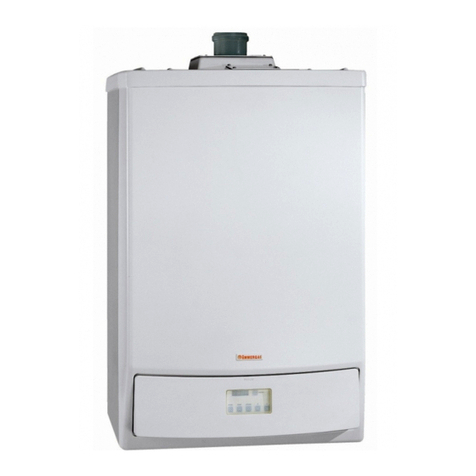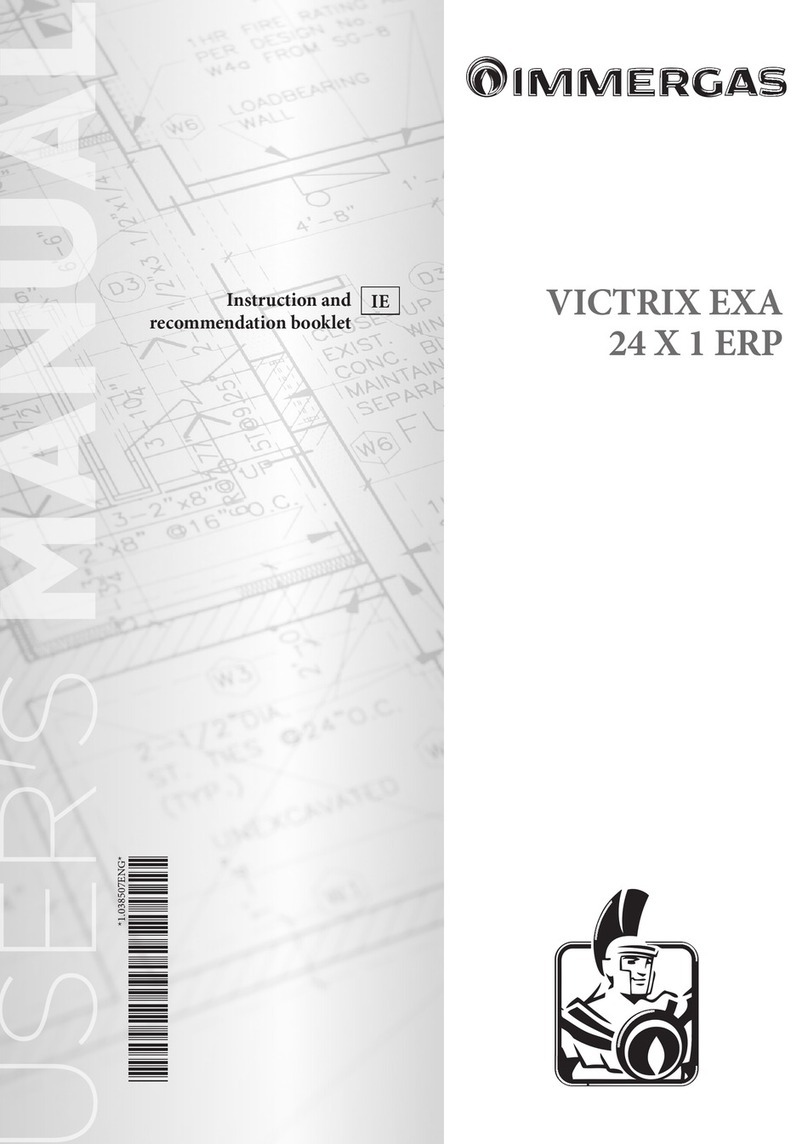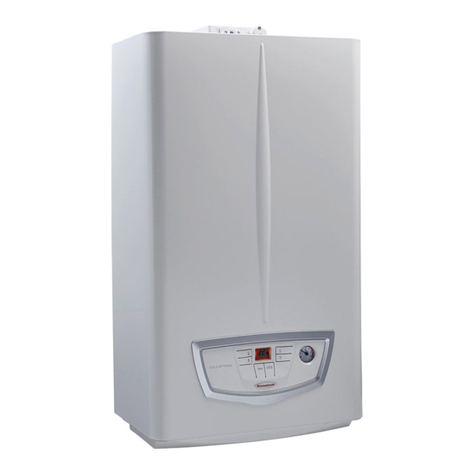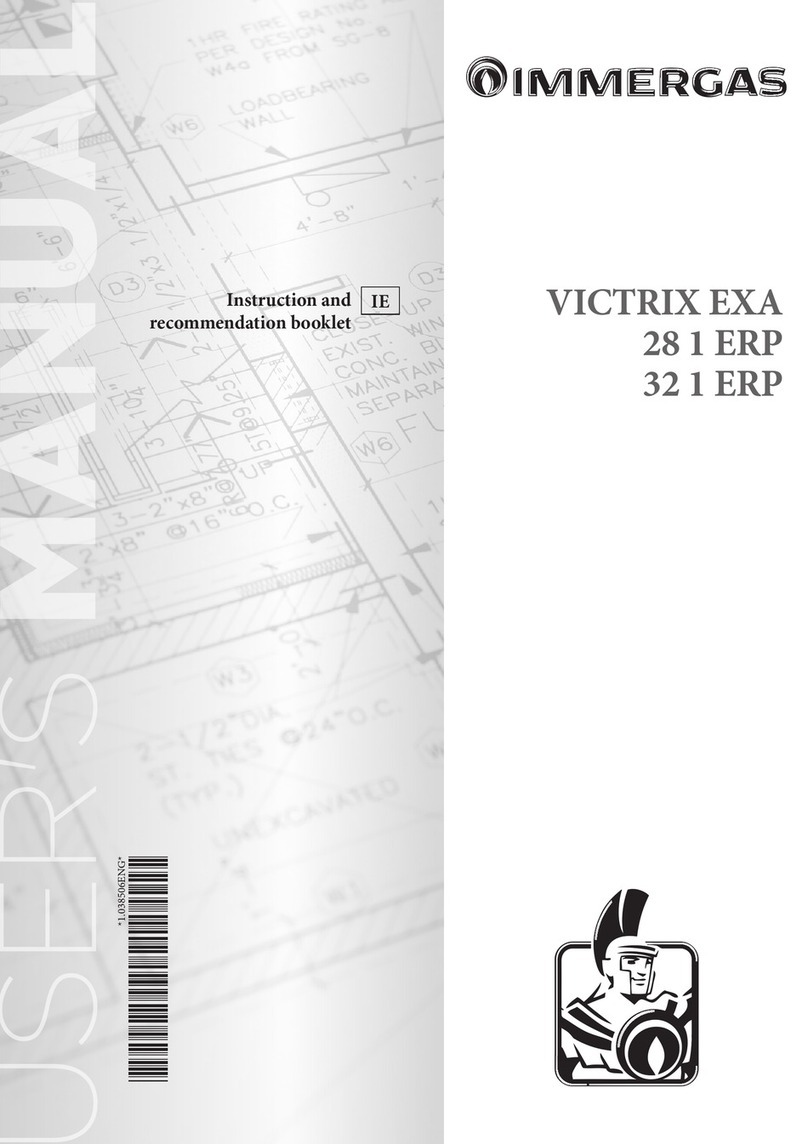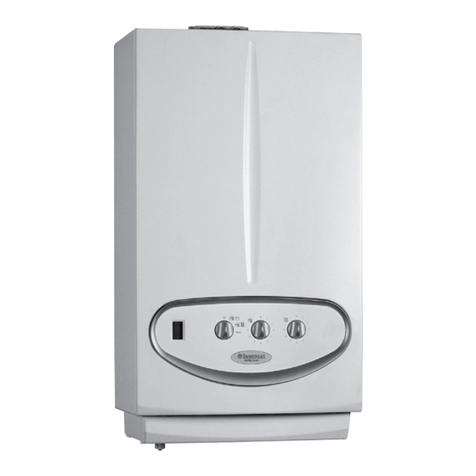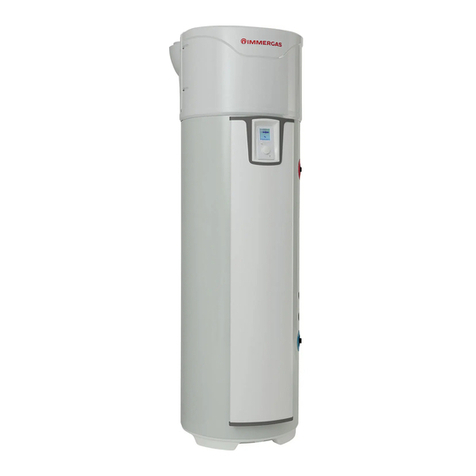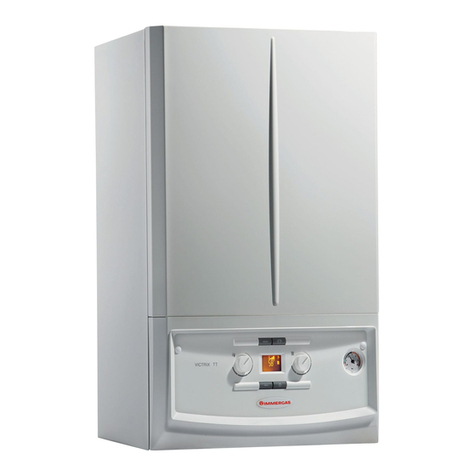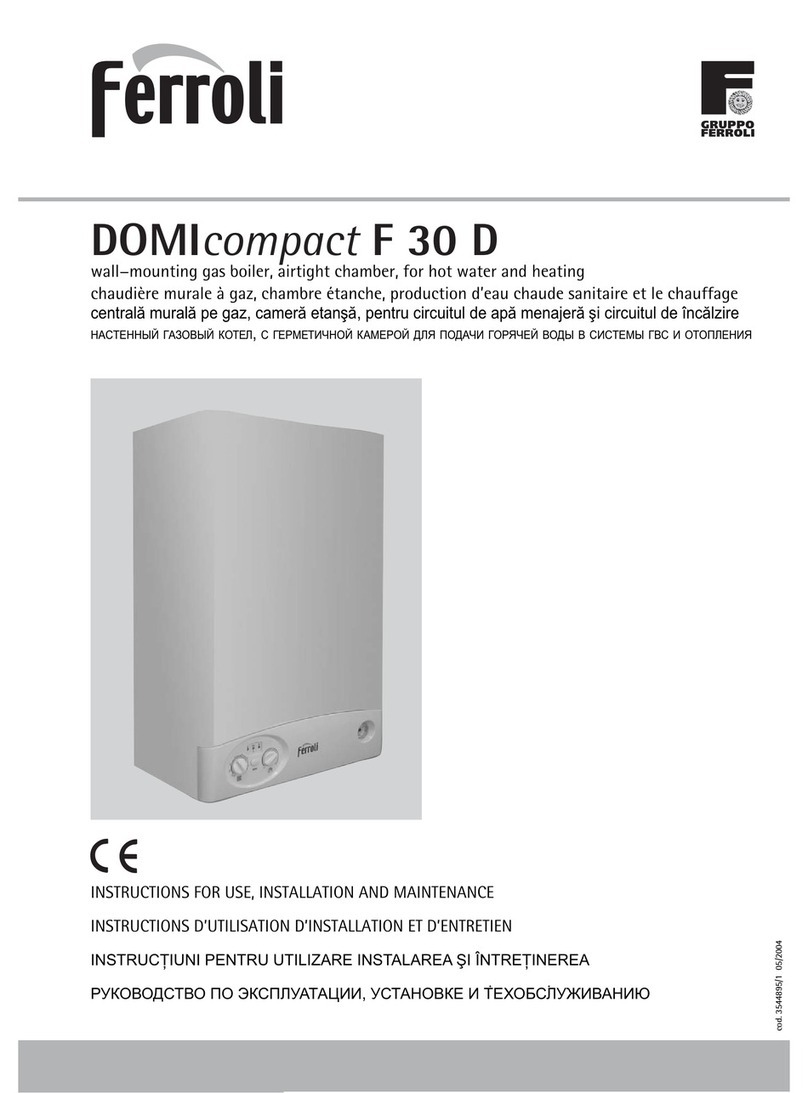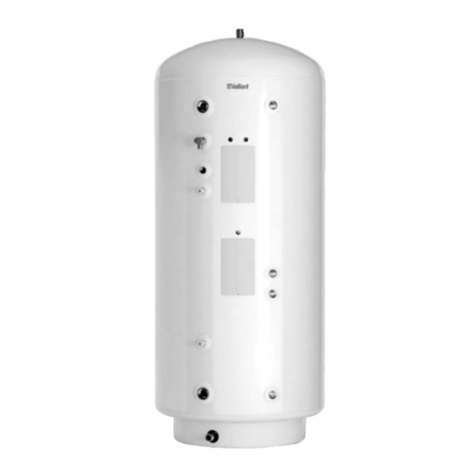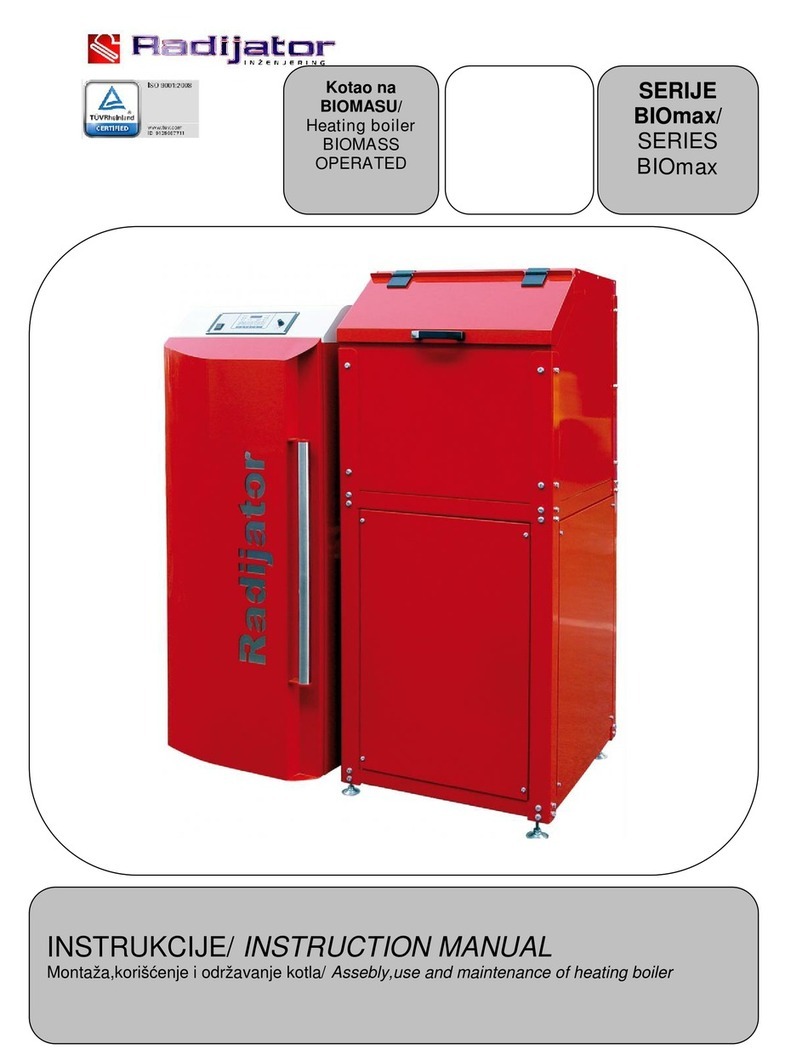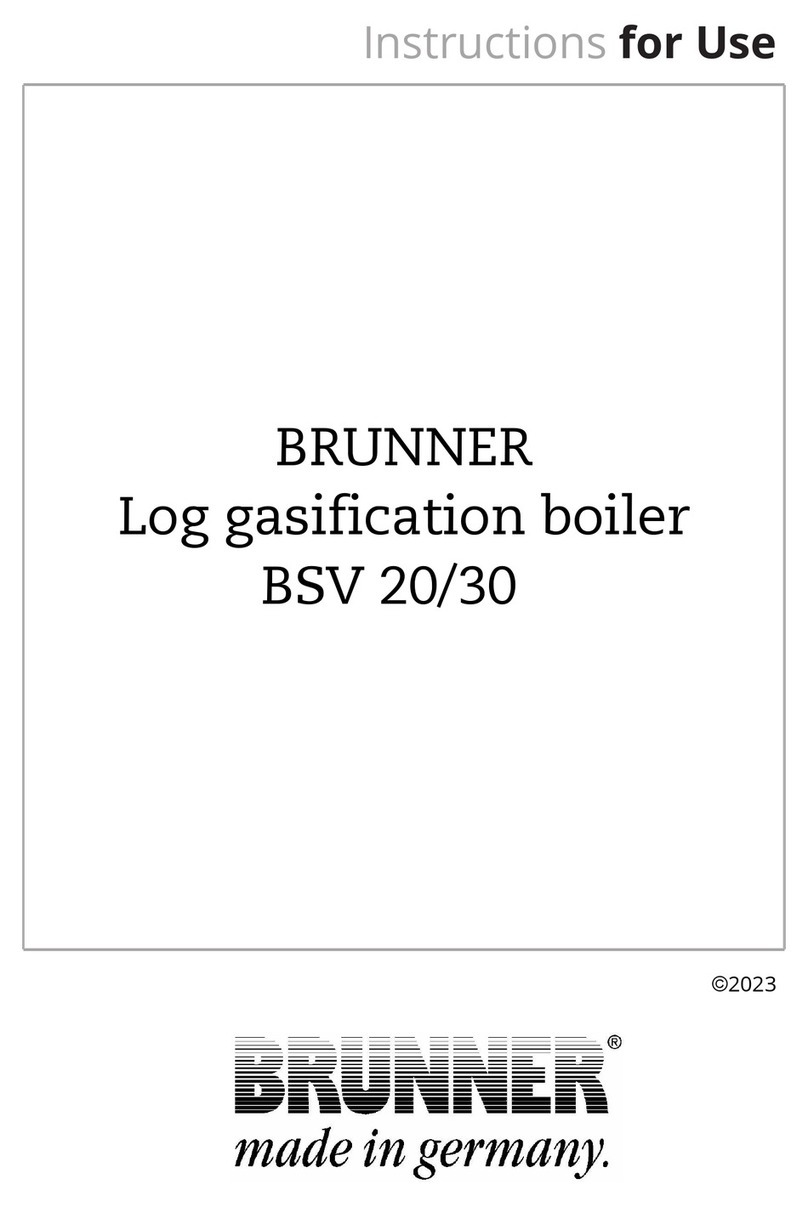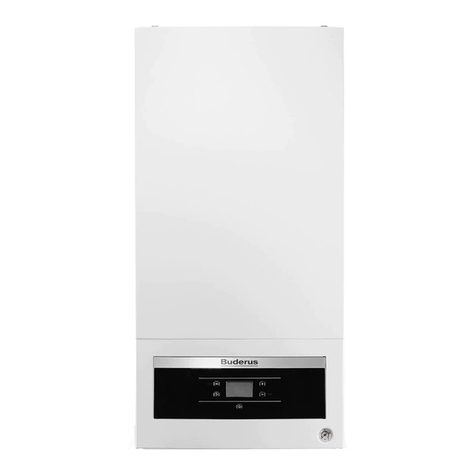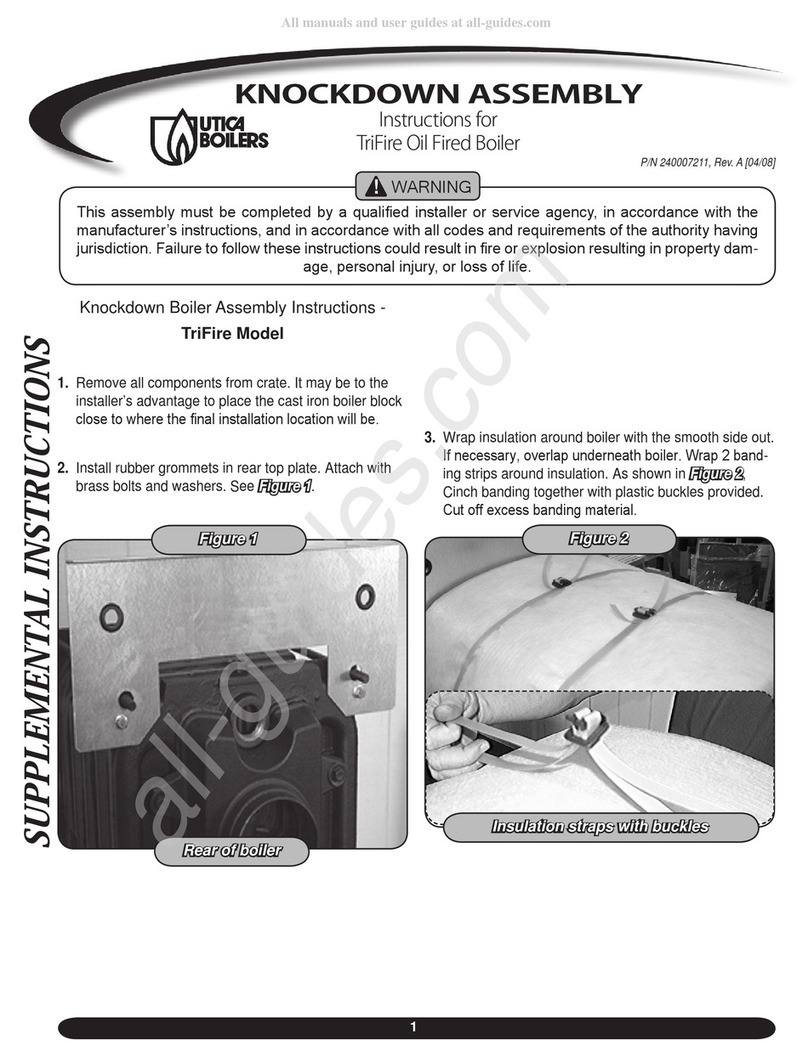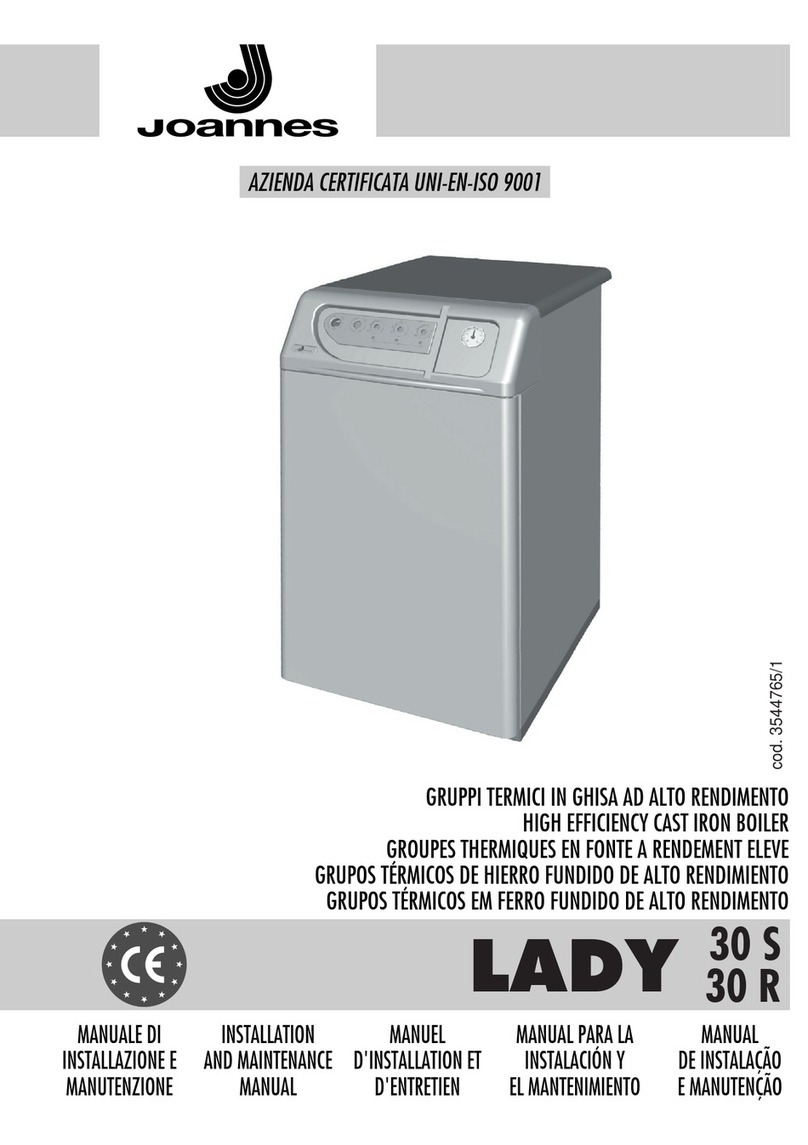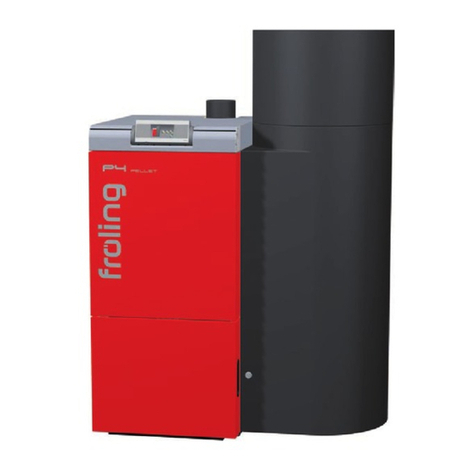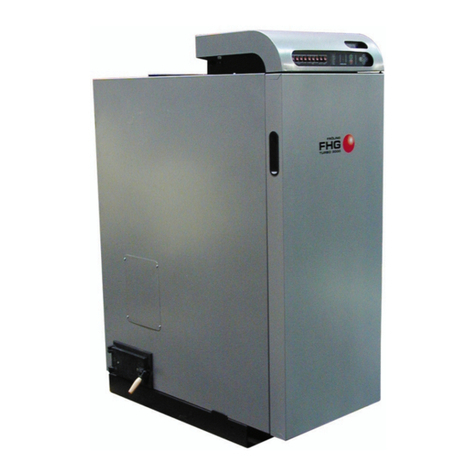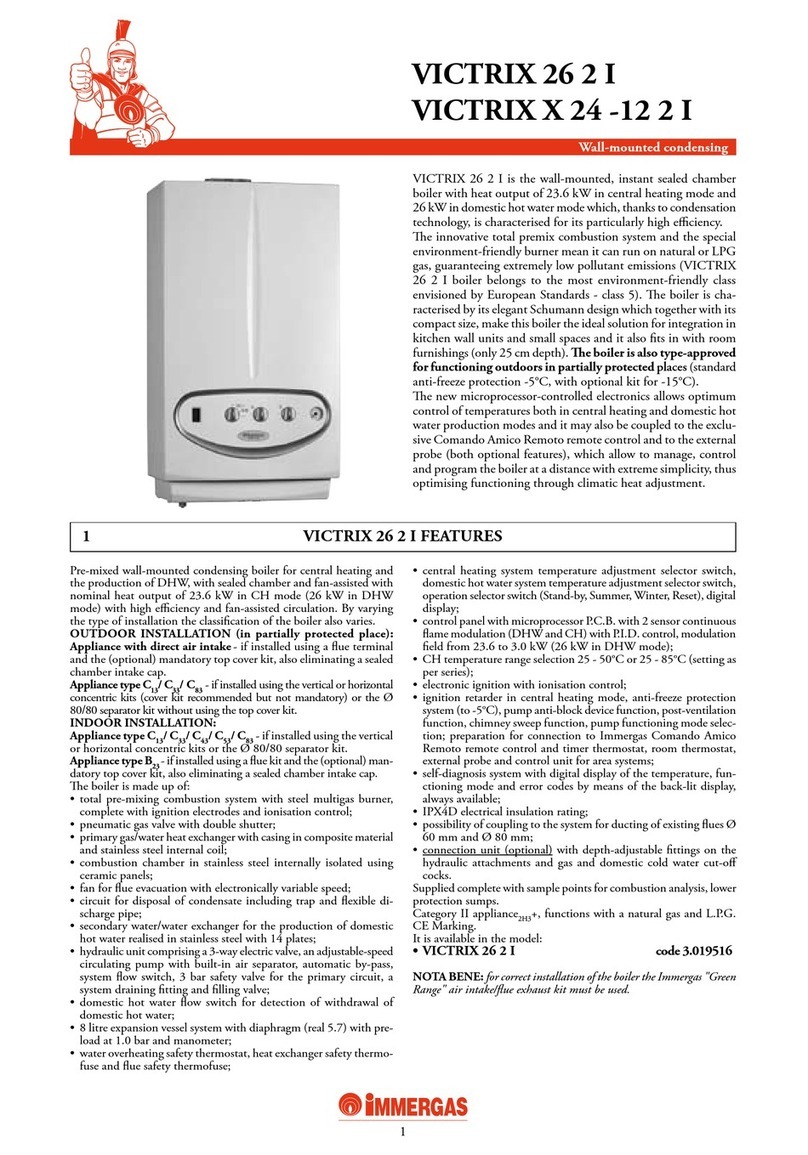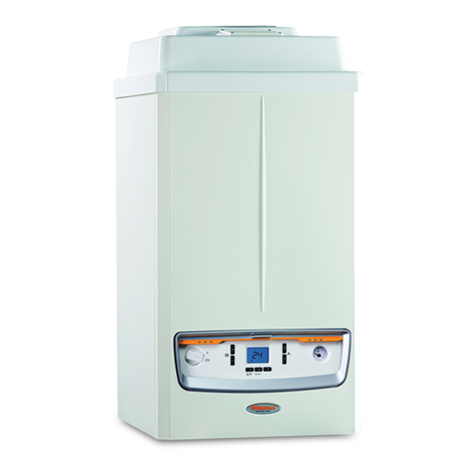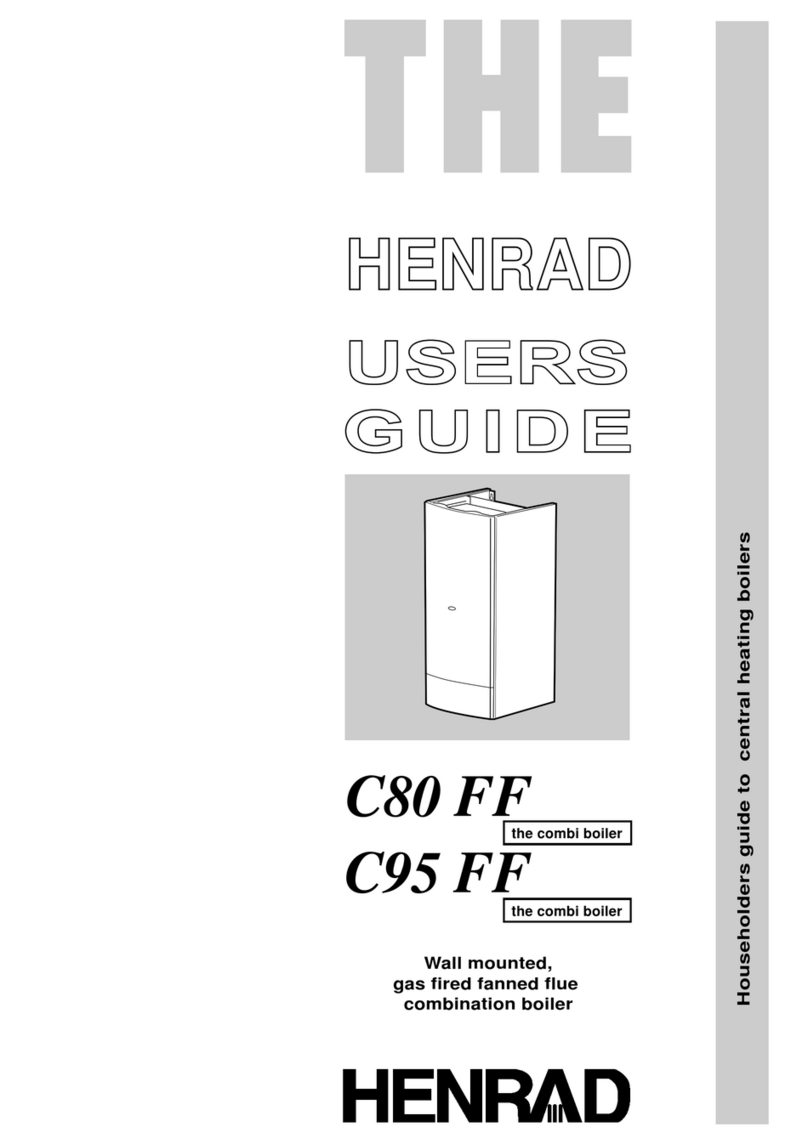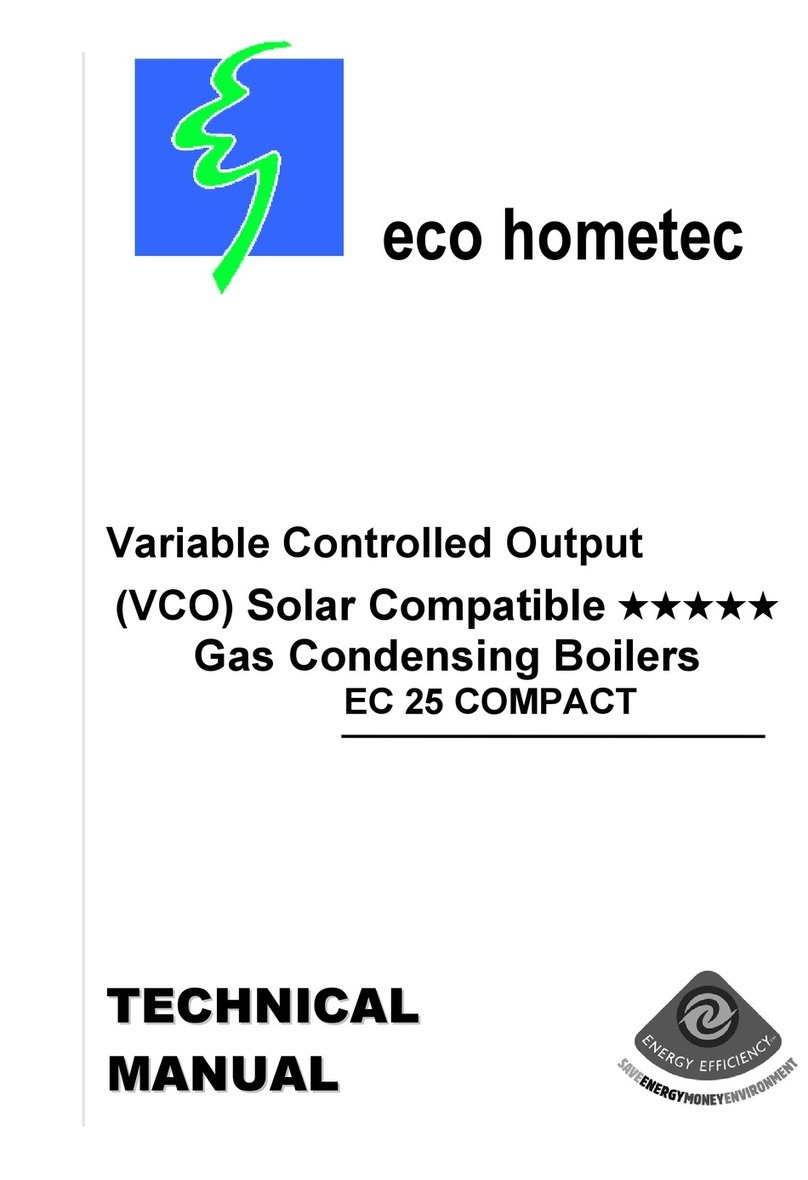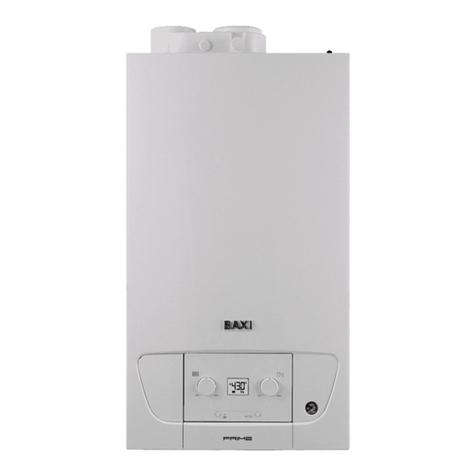
8
1-2
CAVO ALIMENTAZIONE
CAVO SONDA SOLARE
1-3
INSTALLERUSERMAINTENANCE TECHNICIAN
1.6 ELECTRICAL CONNECTION.
e “Hercules Solar 26 2 ErP” boiler has an
IPX5D protection rating for the entire appliance.
Electrical safety of the appliance is reached only
when it is correctly connected to an ecient
earthing system as specied by current safety
standards.
Attention: Immergas S.p.A. disclaims any li-
ability for damage or physical injury caused
by failure to connect the boiler to an ecient
earthing system or failure to comply with the
reference standards.
Also ensure that the electrical installation cor-
responds to maximum absorbed power speci-
cations as shown on the boiler data nameplate.
Boilers are supplied complete with an “X” type
power cable without plug.
e power supply cable must be connected to
a 230V ±10% / 50Hz mains supply respecting
L-N polarity and the earth connection on
this network must also feature a multi-pole
circuit breaker of class III overvoltage category.
When replacing the power supply cable, contact
a qualied rm (e.g. the Authorised Aer-Sales
Technical Assistance Service).
e power cable must be laid as shown (Fig. 1-3).
In the event of mains fuse replacement on the
P.C.B., use a 3.15A quick-blow fuse. For the main
power supply to the appliance, never use adapt-
ers, multiple sockets or extension leads.
Solar panels electrical connection. Only use an
appropriately sized cable to make the connec-
tions. Making them follow the same route as the
power supply cable (in the relevant pipe), make
the connections on the control panel on clamps
45 and 46, eliminating the resistance R15 (Fig.
1-2). Connect the supplied probe on the solar
panel and position it in the relevant seat.
Installation with system operating at direct
low temperature. e boiler can directly feed a
low temperature system by acting on parameter
“P66” (Par. 3.8) and setting the delivery tempera-
ture adjustment range “P66/A” and “P66/B”. In
this situation it is good practice to insert a safety
device in series with the power supply and boiler.
is device is made up from a thermostat with
a temperature limit of 60°C. e thermostat
must be positioned on the system ow pipe at
a distance of at least 2 metres from the boiler.
1.7 REMOTE CONTROLS AND ROOM
CHRONO-THERMOSTATS
(OPTIONAL).
The boiler is prepared for the application of
room chrono-thermostats or remote controls,
which are available as optional kits. All Immergas
chrono-thermostats are connected with 2 wires
only. Carefully read the user and assembly in-
structions contained in the accessory kit.
• On/O digital Immergas chrono-thermostat
(Fig. 1-3). e chrono-thermostat allows:
- set two room temperature value: one for
daytime (comfort temperature) and one for
night-time (reduced temperature);
- set a weekly program with four daily switch
on and switch o times;
- select the required operating mode from the
various possible alternatives:
- manual mode (with adjustable temperature).
- automatic mode (with set program).
- forced automatic mode (momentarily
changing the temperature of the automatic
program).
e chrono-thermostat is powered by two 1.5V
LR 6 type alkaline batteries.
• ere are two types of remote controls availa-
ble: Comando Amico Remoto remote controlV2
(CARV2) (Fig. 1-4) and Super Comando Amico
Remoto remote control (Super CAR) (Fig. 1-5)
both with a climate chrono-thermostat opera-
tion. In addition to the functions described in
the previous point, the chrono-thermostat
panels enable the user to control all the im-
portant information regarding operation of
the appliance and the central heating system
with the opportunity of easily intervening on
the previously set parameters without having to
go to the place where the appliance is installed.
e panel is provided with self-diagnosis to
display any boiler functioning anomalies.
e climate chrono-thermostat incorporated
into the remote panel enables the system ow
temperature to be adjusted to the actual needs
of the room being heated, in order to obtain
the desired room temperature with extreme
precision and therefore with evident saving in
running costs. e chrono-thermostat is fed
directly by the boiler by means of the same 2
wires used for transmitting data between boiler
and device.
Important: if the system is subdivided into areas
using the relevant kit, the CAR V2 and the Super
CAR must be used with its climate thermostat
function disabled, i.e. it must be set to On/O
mode.
CAR V2, Super CAR or On/O chrono-ther-
mostat electrical connection (Optional). e
operations described below must be performed
aer having removed the voltage from the appli-
ance. Any On/O room chrono-thermostat must
be connected to clamps 40 and 41 eliminating
jumper X40 (Fig. 3-2). Make sure that the On/
O thermostat contact is of the “clean” type, i.e.
independent of the mains voltage, otherwise the
P.C.B. would be damaged. Any CAR V2 or Super
CAR must be connected by means of terminals
IN+ and IN- to terminals 42 and 43 on the
P.C.B. (in the boiler), eliminating jumper X40
and respecting polarity (Fig. 3-2). Connection
with the wrong polarity prevents functioning, but
without damaging the CARV2 e boiler can only
be connected to one remote control.
Important: if the Comando Amico Remoto
remote controlV2 is used, arrange two separate
lines in compliance with current regulations
regarding electrical systems. No boiler pipes
must ever be used to earth the electric system or
telephone lines. Ensure elimination of this risk
before making the boiler electrical connections.
REMOTE CONTROL CABLE
SOLAR PROBE CABLE
POWER SUPPLY CABLE
Relay (Optional)
DIM (Op-
tional) Super CAR (Optional)

